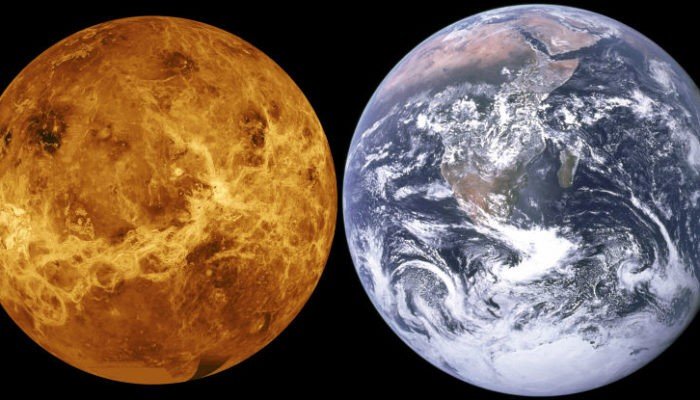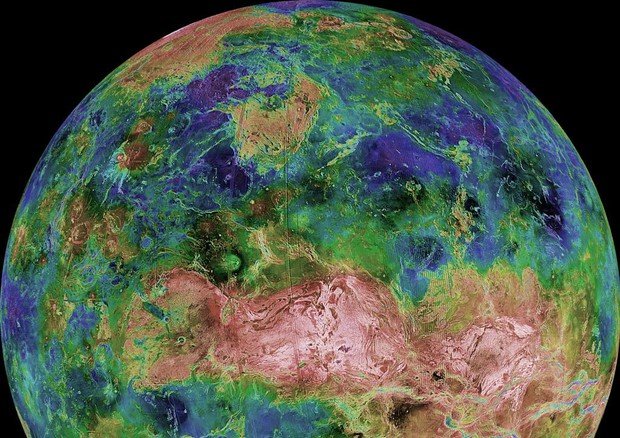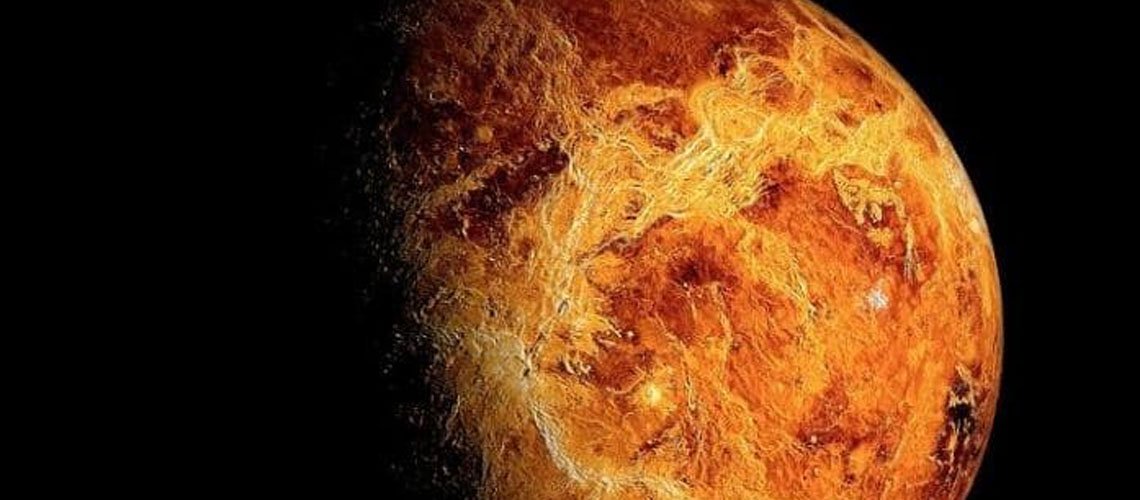© 2000-2023 - Enkey Magazine - All rights reserved
ENKEY SNC - VAT ID IT03202450924 / REA Code CA253701 - Phone. 078162719
All of us know Venus, we know that it’s the second planet of the Solar System starting from the Sun, that its surface is hot, that it takes the name from the Goddess of love. But in the years of the space exploration we discovered in reality much more about the planet Venus, let’s go to discover it together.
From the Goddess to the Planet
Venus takes its name from the roman Goddess of the love and the beauty. It’s the second brightest object in the night sky, after the Moon. It often appears with the naked eye right after the twilight or just before the sunrise, for this reason since the ancient years it was called Star of the Morning or Star of the Evening. But no one, before Pitagora, understood that the two stars were in reality the same object.
It will take even more time to understand that the star of the morning or of the evening is in reality a planet. A planet considered, otherwise, as an Earth twin. Infact, it has almost the same size and mass and it is a rocky planet. But we can say that the similarities end here.

The atmosphere is thick and mostly composed by carbon dioxide. The pressure is 90 times the terrestrial one. All of it makes it the hottest planet of the Solar System. Furthermore, the magnetic field is much lower than the one of the planet Earth and for this reason Venus doesn’t have satellites or rings.
A long time ago Venus was very different
Maybe today the planet Venus isn’t the twin of the Earth that we imagine. The hot rocky planet once ago might had the right characteristics to host the life.

“Venus could have a stable weather for billions of years, with temperatures between 20 and 45°”. It’s the hypothesis made by Michael Way, of the Goddard Institute of Space Studies. According to this theory Venus once was thriving, with a temperate climate and with liquid water that run on its surface.
Everything maybe for three billion of years. Plenty of time to see birth and flourish, on its own surface, the life. Everything changed about 700 thousand years ago, when a catastrophic event overturn the planet, by transforming it in the one that we are able to see today.
Always according to Way the hypothetical catastrophic event might be a very fast tectonic of the plates, which turned the planet’s crust, by releasing a high quantity of carbon dioxide, that we can still find today inside its atmosphere.
Venus’ atmosphere
About the atmosphere, the Venus’ one is really special. Its thick and rich of carbon dioxide atmosphere rotates much faster than the planet. The external area runs at more than 400 km/h, until to arrive to 4-5 km/h on the ground level. It spends, so, about 4 days to make a full circle of the planet. While it spends 243 days to completely rotate on itself.

Venus, therefore, is covered by a thick blanket of clouds mainly composed by sulphuric acid, that avoid us to correctly observe the ground. They are moved by the winds in a really particular way. The speed changes a lot year by year and it changes from a hemisphere to the other too. Furthermore, during the night the clouds converge around the equator. These phenomenos are still considered an unsolved mystery.
A new frontier
Even though all of this Venus is back and it’s now a new frontier of the space exploration. The programmed missions are the one of the indian space agency, in the 2023, the one of the NASA, in the following years and the one of the ESA, in the 2032.
Only two probes, until now, were sent toward Venus, and no one since 15 years to now. So what’s going on with this change of plane? Why did the planet, suddenly, return to be interesting? The biggest problems, which impeded the exploration of it, were right the high temperatures, that on the surface are about the 470 degrees, and the pressure that, on the ground, is 90 times the terrestrial one.
The technology, obviusly, went ahead in the last years and the exploration of Venus isn’t any more such impossible. The engineer Neudeck realized two microchips and tested them inside a tank of stainless steel, reproducing the atmospherical conditions of Venus.
“Our research didn’t create the most complicated chips in the world and not even the fastest ones, but the ones which are able to last long in the environmental conditions of Venus so to allow a research that can last even few months”.
One of the main purpose of the future missions is the one to map the planet, what was already attempted by the probe Magellano 30 years ago.
This post is also available in:
 Italiano
Italiano

